![]()
January 2012
This study updates and supplements the ITIC’s June 2011 study of the Muslim Brotherhood. It examines the Muslim Brotherhood in Egypt and other Arab countries in the wake of the past year’s regional uprisings. It deals with the nature of the movement in each country, its relations with the various regimes and evaluates its chances of exploiting regional unrest to its own ends. It also examines the Muslim Brotherhood’s branches in Western European countries and the implications of its activity for both internal European affairs and the Palestinian-Israeli conflict.
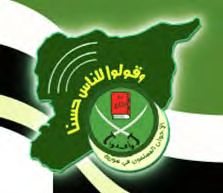
The emblem of the Muslim Brotherhood in Syria: Crossed swords and the Qur'an, the Muslim Brotherhood logo under a map of Syria and the inscription "Tell people good things" (a quotation from the Qur'an, indicating the need to guide the faithful along the correct path in the spirit of the da'wah – preaching Islam, as stressed by Hassan al- Banna). While in Syria the Muslim Brotherhood was radicalized and took military action against the authorities, it is notable to find it stressing the da'wah.
The Muslim Brotherhood[10] was established in Syria in 1945 by disciples of Hassan al-Banna. At first it focused on educational and societal activities (the da’wah). Most of its activity, at least until the early 1980s, was concentrated in Homs and Hama, two large Sunni cities in central Syria. It also had a presence in poorer neighborhoods in Damascus. During the 1960s and 1970s its ideology was radicalized according to the doctrines of Sayyid Qutb, thus, since 1972, the militant school of thought has dominated the movement, calling for a jihad against the Syrian regime.
One of the most prominent founders was Mustafa al-Siba’i, who taught Islamic law at the University of Damascus and was the Muslim Brotherhood’s first Inspector General in Damascus.[11] A disciple of Sayyid Qutb, he was one of the most important Muslim Brotherhood figures in Syria in the 1970s and 1980s. He was arrested by the Syrian authorities for five years for advocating the overthrow of the Hafez Assad’s (Alawite-run) regime and the establishment in Syria of a Sunni Islamic regime. In addition, from 1979 to 1987 Said Hawa was the leader of the Muslim Brotherhood in Syria. He exploited his time in jail to write books and formulate his ideology. He led the Muslim Brotherhood from 1979 to 1987.[12]
In the 1970s and early 1980s the Muslim Brotherhood’s campaign against the regime of Hafez Assad was characterized by violence and terrorism. The campaign included the murder of members of the Syrian army and high-ranking Baath party activists. After a number of years of violent clashes between the movement and the regime, in 1982 the Assad regime dealt it a severe blow in the city of Hama, where massive Syrian army forces (including tanks and artillery) were deployed against civilians. According to unofficial estimates, between ten and twenty thousand people were killed and the city was seriously damaged, including the destruction of a large number of mosques.
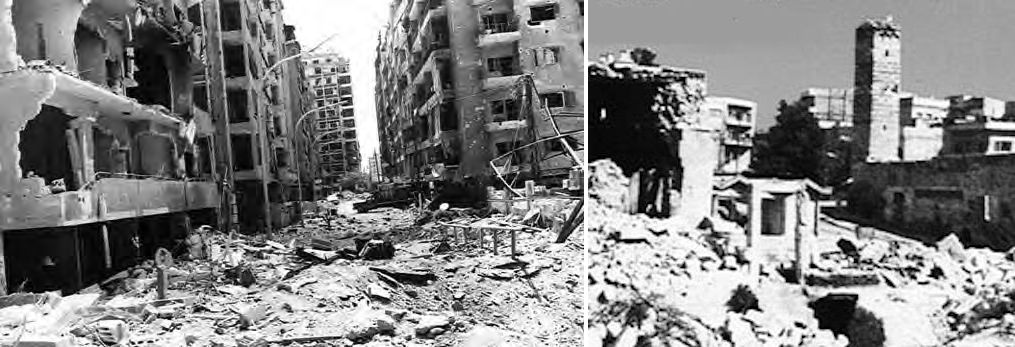
The destruction caused to Hama by the army's repression of the uprising (Left picture from the egyptianchroniclles.blogspot.com website, right picture from the ihkwanwiki website, February 8, 2010).
The brutal repression of the movement led to its going underground and to an almost complete cessation of its activities in Syria, where to this day it is outlawed. Its leaders are active beyond Syrian borders, especially in London, Ankara and Aachen in Germany, but in many other European countries. In Aachen it was founded by Issam al-Atar and funded by Youssef Nada (who for years has been considered as the movement’s principal financier).[13]
When Bashar Assad came to power in 2000 the movement recontacted the regime and hundreds of its activists were released from prison. However, the contacts soon ended and as of 2004 the movement has increased its efforts to convince the Syrian people and Western powers to overthrow the Syrian regime.
Between 1996 and 2010 the Inspector General of the Muslim Brotherhood in Syria was Ali Sadr al-Bayanuni, born in Aleppo, a lawyer. From 2000 he worked in London, where he was friendly with Abd al-Halim Khadam (Syrian vice president under Hafez Assad and who sought political asylum in London in 2005, becoming one of the leaders of the Syrian opposition in exile). The two agreed on joint actions against the Bashar Assad regime but nothing came of them, among other reasons because after Operation Cast Lead (2009) the London office of the Syrian Muslim Brotherhood announced it was suspending its anti-regime activities and turning its resources to supporting Hamas in the Gaza Strip. The announcement ended with an appeal to the Syrian regime “to reconcile with its people” so it could fulfill its “sacred duty to liberate the occupied land…” (Al-Quds, Kuwait, September 18, 2009).
In August 2010 an engineer named Muhammad Riyad al-Shaqfa was appointed Inspector General of the Syrian Muslim Brotherhood (Al-Masri Al-Yawm, August 13, 2011). He was born in 1944 in Hama, where his father was head of the local council of Islamic sages, and joined the Muslim Brotherhood in 1961. He studied at the University of Damascus and received a BA in civil engineering in 1968. In 1978 he was appointed to the Muslim Brotherhood’s board of directors in Hama and the following year became chairman of the board. In 1983 he became a member of the movement’s Syrian leadership. He apparently has a military background.[14]
In the early 1980s (possibly in the wake of the events in Hama) al-Shaqfa lived in Iraq. In 2003 in Baghdad an attempt was made on his life but he escaped with minor injuries. Since 2008 he has lived in Yemen, and today also spends time in Turkey.[15] This past year he said he was prepared to turn the Muslim Brotherhood in Syria into a political party,[16] as the movement had done in other Arab countries.
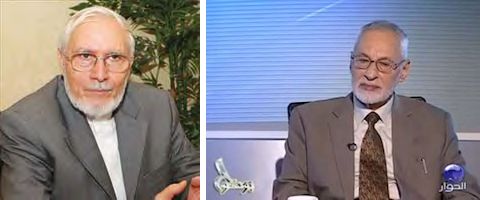
Left: Engineer Muhammad Riyad al-Shaqfa, the Muslim Brotherhood in Syria's Inspector General as of 2010 (Picture from the official Muslim Brotherhood website); Right: Ali Sadr al-Bayanuni, the Muslim Brotherhood in Syria's Inspector General between 1996 and 2010 (Picture from Al-Hiwar, the Muslim Brotherhood TV station in London, November 16, 2009).
In February 2011, following the dramatic events in Tunisia and Egypt, the Muslim Brotherhood initiated a media campaign against the Syrian regime. It called for the end of the oppression of the Syrian people and strongly criticized the poverty, hunger and unemployment prevalent in Syria (Al-Sharq Al-Awsat, February 2, 2011). The Muslim Brotherhood is part of the coalition of Muslim organizations participating in the ongoing Syrian uprising to overthrow Bashar Assad.
As the riots continued the Muslim Brotherhood began participating in various opposition committees in Europe. Eventually it joined the Syrian National Council,[17] headed by the liberal opposition figure Dr. Burhan Ghalioun, who lives in France. Mohammed Farouk Tayfour, Muhammad al-Shaqfa’s deputy, is the movement representative in the council’s executive committee. The Muslim Brotherhood may be using the Syrian National Council, which represents itself as democratic and liberal, to receive international recognition and eventually participate in the administration formed after the fall of Assad.[18]
Riyad al-Shaqfa, the inspector general of the Muslim Brotherhood in Syria, was interviewed by Al-Sharq Al-Awsat on December 5, 2011. He said he expected the Syrian regime to fall and that he would agree to Turkish military intervention, but not to other foreign intervention. He admitted that the Muslim Brotherhood was not based in Syria because of the law which made membership in the movement a capital crime.
He also claimed that the Muslim Brotherhood did not have ties to Hezbollah because Hezbollah and Iran took part in the oppression of the Syrian people. He said he knew that there were specialists from the Iranian Revolutionary Guards in the Syrian operations room. Asked if the Muslim Brotherhood would adopt the Turkish model of government after the fall of Assad, he answered that he was in favor of the Turkish model rather than the Iranian. He claimed that the Muslim Brotherhood did not want to impose religious law on Syria but would legislate a constitution based on freedom, justice and equality, inspired by Islam.
In our assessment, because of the Sunni Islam hold on the people of Syria, despite the years of oppression, the Muslim Brotherhood in Syria will play and important role in the protest movement against Assad’s regime. It will be done as part of the coalition of the regime’s opponents it will want to join. In Syria as in other countries, at this stage the movement wants to represent itself as moderate, but that may change after the Syrian regime falls and it becomes an important political power.
![]()
Read the other sections here:
1. The Muslim Brotherhood in the Arab World and Islamic Communities in Western Europe: an overview
2. The Muslim Brotherhood in Egypt
3. The Muslim Brotherhood in Syria
4. The Muslim Brotherhood in Jordan
5. The Muslim Brotherhood in Algeria
6. The Muslim Brotherhood in Sudan
7. The Muslim Brotherhood in Saudi Arabia
8. The Muslim Brotherhood in The United Arab Emirates
9. The Muslim Brotherhood in Lebanon
10. The Muslim Brotherhood in Morocco
11. The Muslim Brotherhood in Tunisia
12. The Muslim Brotherhood in Europe
![]()
Notes:
[10] In preparing this section we referred to Israel Elad Altman, “Strategies of the Muslim Brotherhood Movement” (Washington: Hudson Institute, 2009), pp. 24-30.
[11] The title of the Muslim Brotherhood leader in Syria and other Arab countries is General Inspector (Al-murakab al-‘aam) rather than General Guide (Al-murshid al-‘aam) as it is in Egypt.
[12] With the exception of 1982-1984, when he worked for the Global Muslim Brotherhood.
[13] Meforum.org website.
[14] Al-Sharq Al-Awsat, August 20, 2010)
[15] Sooryoon.net, September 15, 2010
[16] Ah00.wordpress.com
[17] An umbrella organization of a number of opposition groups, among them liberals, Kurds, Muslim Brotherhood members, tribesmen and member of the local coordinating committees responsible for organizing demonstrations.
[18] A gathering called the National Rescue Conference was held by the Syrian opposition in Istanbul on July 15, 2011. Its organizers claimed that it was attended by representatives of all the opposition groups but in effect its tone was Islamic. Among the speakers was Ali Al-Bayanuni, the former inspector general of the Muslim Brotherhood in Syria.



 RSS
RSS

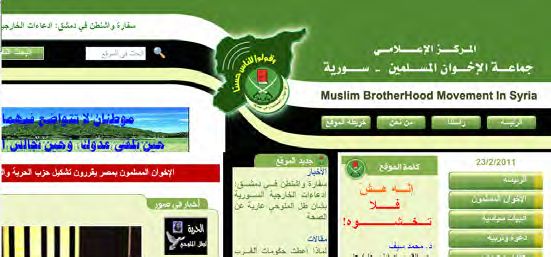
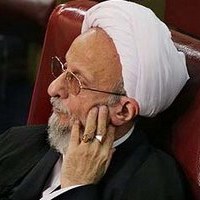
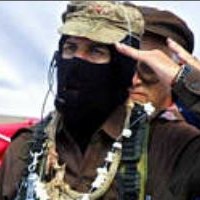
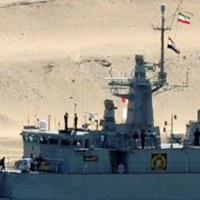
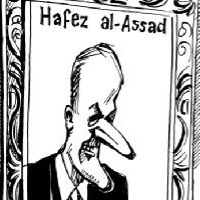
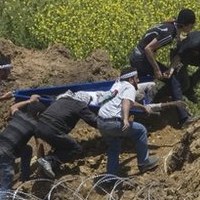




[…] 3. The Muslim Brotherhood in Syria […]
[…] 3. The Muslim Brotherhood in Syria […]
[…] 3. The Muslim Brotherhood in Syria […]
[…] b) Syria […]
[…] 3. The Muslim Brotherhood in Syria […]